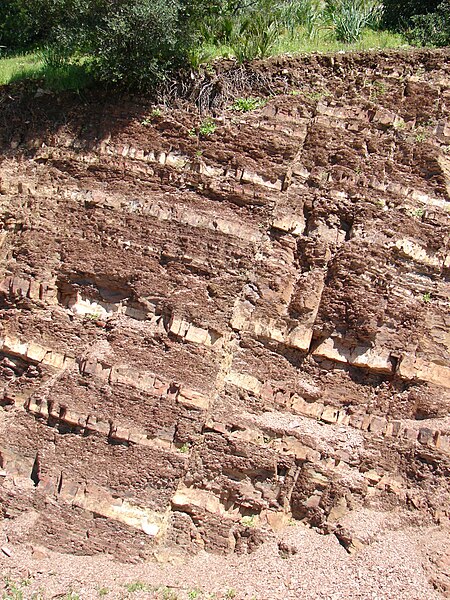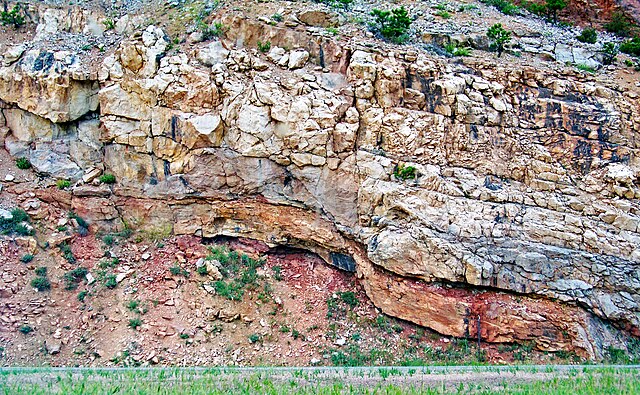Fault blocks are very large blocks of rock, sometimes hundreds of kilometres in extent, created by tectonic and localized stresses in Earth's crust. Large areas of bedrock are broken up into blocks by faults. Blocks are characterized by relatively uniform lithology. The largest of these fault blocks are called crustal blocks. Large crustal blocks broken off from tectonic plates are called terranes. Those terranes which are the full thickness of the lithosphere are called microplates. Continent-sized blocks are called variously microcontinents, continental ribbons, H-blocks, extensional allochthons and outer highs.
The Hanging Hills of Connecticut (Metacomet Ridge range); upfaulting (horst) visible from right to left.
Tilted fault-block formation in the Teton Range
In geology, a fault is a planar fracture or discontinuity in a volume of rock across which there has been significant displacement as a result of rock-mass movements. Large faults within Earth's crust result from the action of plate tectonic forces, with the largest forming the boundaries between the plates, such as the megathrust faults of subduction zones or transform faults. Energy release associated with rapid movement on active faults is the cause of most earthquakes. Faults may also displace slowly, by aseismic creep.
Satellite image of a fault in the Taklamakan Desert. The two colorful ridges (at bottom left and top right) used to form a single continuous line, but have been split apart by movement along the fault.
Normal fault in La Herradura Formation, Morro Solar, Peru. The light layer of rock shows the displacement. A second normal fault is at the right.
A fault in Morocco. The fault plane is the steeply leftward-dipping line in the centre of the photo, which is the plane along which the rock layers to the left have slipped downwards, relative to the layers to the right of the fault.
Normal fault and drag folds (eastern flanks of the Bighorn Mountains, Wyoming, US)






